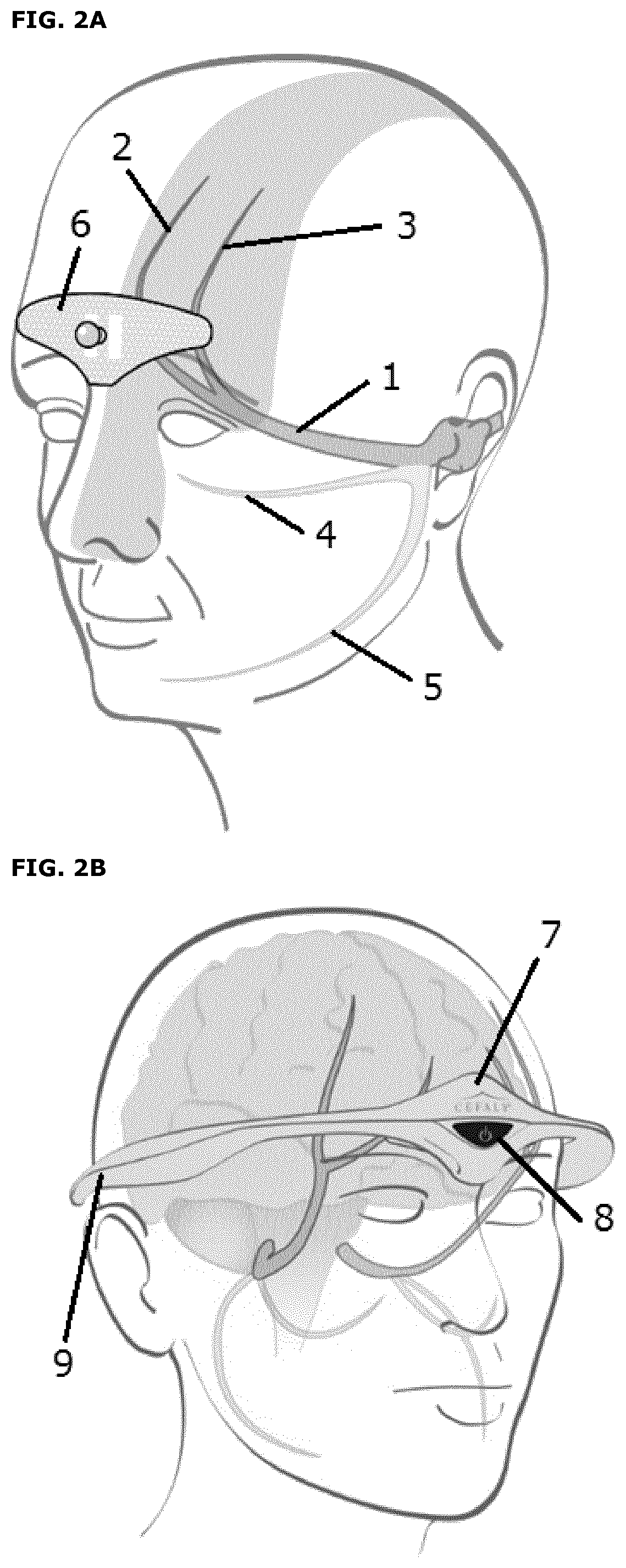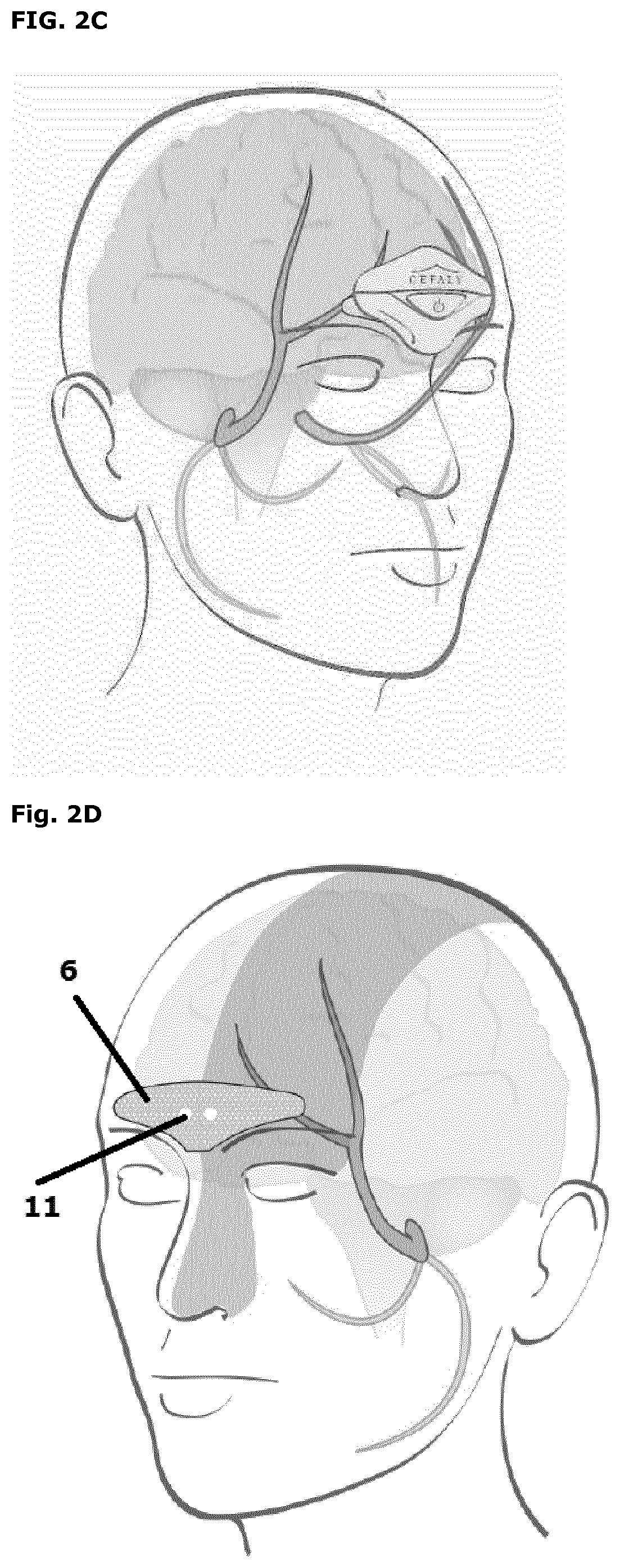External Trigeminal Nerve Stimulation for the Acute Non-Invasive Treatment of Migraine Attacks
a trigeminal nerve and external stimulation technology, applied in the field of system and a method for acute non-invasive treatment of migraine attacks, can solve the problems of headache chronification, significant impairment of quality of life, moderate to severe side effects,
- Summary
- Abstract
- Description
- Claims
- Application Information
AI Technical Summary
Benefits of technology
Problems solved by technology
Method used
Image
Examples
example 1
[0051]A monocentric, prospective, open-labelled clinical trial was conducted at the Columbia University Headache Center (NY, USA). The study was approved by the ethics committee at Columbia University Medical Center (IRB-AAA09752) and registered on ClinicalTrials.gov (identifier: NCT02411513). Written informed consent was obtained from all patients included in the study. Patients with migraine with or without aura were recruited at a standard care visit or from home if they were experiencing a migraine attack lasting for at least three hours, with pain intensity stabilized for at least one hour and no intake of acute migraine medications for the prior three hours. Inclusion criteria were the following: adult patients aged 18 to 65 years with a history of episodic or chronic migraine with or without aura, meeting the diagnostic criteria listed in the International Classification of Headache Disorders 3rd edition (beta version) (ICHD-III beta, 2013) section 1, migrain...
example 2
Trigeminal Nerve Stimulation Device
[0065]The device is a small, portable product comprising legs, which is meant to be worn on the forehead by attachment to a bipolar self-adhesive electrode on the forehead (Figures 2, 4 and 5). The electrode comprises a length of about 94 mm and a height of about 30 mm. Two 1.5V AAA batteries provide power to the device.
[0066]The device is an external cranial neurostimulator designed for supraorbital neurostimulation (also known as external trigeminal nerve stimulation or e-TNS). The electrode is designed in order to cover both sides of the supratrochlearis and supraorbitalis nerves, which are branches of the trigeminal nerve. Trigeminal nerve stimulation induces a sedative effect on the central nervous system. The electrical impulses generated by the device trigger signals (action potentials) on the supratrochlear and supraorbital nerves of trigeminal nerve. Repetitive excitation of the trigeminal nerve is a neuromodulation of the trigeminal syste...
example 3
ind Randomized Sham-Controlled Trial
[0070]The main objective of this study was to assess the efficacy and safety of the device disclosed in example 2 as an acute treatment of migraine attacks with or without aura (International Classification of Headache Disorders [ICHD]-III beta (2013) section 1) in patients from 18 to 65 years old, in a multi-center, double-blind, randomized, sham-controlled trial.
[0071]The multi-center, prospective, double-blind, randomized, sham-controlled clinical trial was conducted in 3 investigation sites. Eligible patients were randomized 1:1 to verum or sham stimulation and treated with the device during a 1-hour e-TNS treatment session at the clinic. Pain intensity was scored by the patient using a visual analogue scale (VAS) before the treatment, after the 1-hour treatment session, at 2-hour after the beginning of the treatment initiation and finally at 24-hour after the beginning of the treatment initiation. Anti-migraine rescue medication intake was re...
PUM
 Login to View More
Login to View More Abstract
Description
Claims
Application Information
 Login to View More
Login to View More - R&D
- Intellectual Property
- Life Sciences
- Materials
- Tech Scout
- Unparalleled Data Quality
- Higher Quality Content
- 60% Fewer Hallucinations
Browse by: Latest US Patents, China's latest patents, Technical Efficacy Thesaurus, Application Domain, Technology Topic, Popular Technical Reports.
© 2025 PatSnap. All rights reserved.Legal|Privacy policy|Modern Slavery Act Transparency Statement|Sitemap|About US| Contact US: help@patsnap.com



